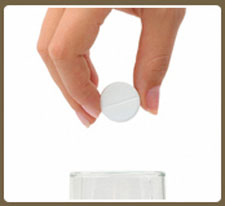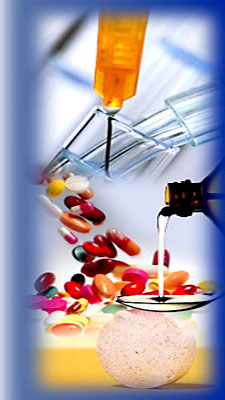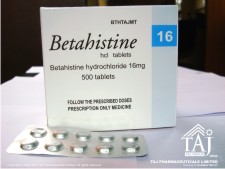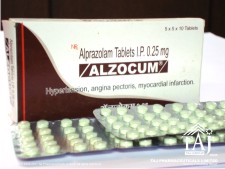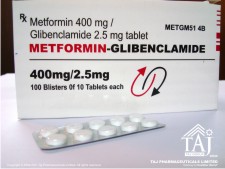|
Product Books
A fundamental duct
system design manual for commercial and light industrial heating,
ventilating and air conditioning systems. System effects for
inlets and outlets of fans, noise control in ducts and use of
extractors, splinters and dampers are included. New loss
coefficients for elbows with 45-degree throats on square and
radius heels and radius throats with square heels. Losses compare
favorably with elbows with double wall turning vanes in several
cases. Structured to offer the designer options in
energy-efficient design methods, materials and construction.
Includes soft metrics.
Handbook of Pharmaceutical
Manufacturing Formulations, Second Edition: (Six-Volume Set)
An authoritative and practical guide to
the art and science of formulating drugs.With thoroughly revised and
expanded content, this Second Edition six-volume
set compiles volumes from FDA New Drug , patent applications, and
other sources of generic and proprietary formulations to cover the
broad spectrum of issues concerning drug manufacturing.
A must-have collection for
pharmaceutical manufacturers, institutions, and regulatory
authorities, this set is an excellent platform for drug companies
to benchmark their and for generic companies to formulate drugs
coming off patent.
As the largest reference on
pharmaceutical formulations, this handbook also provides
guidelines on how to file aNDAs in the shortest possible time,
helping pharmaceutical companies to cut costs in the of
pharmaceutical research and development.
Divided conveniently into two
parts—regulatory and manufacturing guidelines, and
formulations—each volume in the set covers:
Drug Delivery Nanoparticles Formulation and
Characterization
Explore the fundamental concepts of drug delivery formulation and
characterization.
Nanoparticulate Drug Systems II
presents key aspects of nanoparticulate system development for
various therapeutic applications and provides advanced methods
used to file for regulatory approval.
This comprehensive guide features: 100 high quality images Process
Analytical Techniques (PAT) used in manufacturing Nanoparticulate
Drug Delivery Systems (NDDS) in-vitro and in-vivo evaluation of
NDDS applications of novel techniques used in formulation
development and characterization, such as microscopic and
nonmicroscopic techniques.
Pharmaceutical Preformulation and Formulation:
A Practical Guide from Candidate Drug Selection to Commercial
Dosage Form, Second Edition
This timely Second
Edition reflects the mounting pressure on pharmaceutical
companies to accelerate the new drug development and launch
process, and the shift from developing small molecules to the
growth of biopharmaceuticals. It meets the need for up-to-date and
advanced information for drug preformulation and formulation, and
addresses the current trends in the continually evolving
pharmaceutical industry.
Ideal for practitioners working
in the pharmaceutical industry (including R&D scientists,
technicians, and managers), as well as undergraduate and
postgraduate courses in industrial pharmacy and pharmaceutical
technology, this text addresses: candidate drug selection drug
discovery and development preformulation predictions and drug
selections design to commercial dosage form biopharmaceutical
support in formulation development and more.
Pharmaceutical Suspensions: From Formulation
Development to Manufacturing
The suspension dosage form has long been used for
poorly soluble ingredients for various therapeutic indications.
Development of stable dispersions over the shelf life of the drug
product continues to be a challenge on many fronts.
A good understanding of fundamentals of disperse systems is in the
development of a suitable pharmaceutical suspension. The
development of suspension dosage form follows a very complicated
path. The selection of the proper excipients (surfactants,
viscosity imparting agents etc.) is important. The particle size
distribution in the finished drug product dosage form is a
critical parameter that significantly impacts the bioavailability
and pharmacokinetics of the product. Appropriate analytical
methodologies and instruments (chromatographs, viscometers,
particle size analyzers, etc.) must be utilized to properly
characterize the suspension formulation. The development process
continues with a successful scale-up of the manufacturing process.
Regulatory agencies around the world require clinical trials to
establish the safety and efficacy of the drug product. All of this
development work should culminate into a regulatory filing in
accordance with regulatory guidelines. Pharmaceutical Suspensions,
in its organization, follows the development approach used widely
in the pharmaceutical industry. The primary focus of this book is
on the classical disperse system – poorly soluble active
pharmaceutical active dispersed in a suitable vehicle.
After discussing various disperse systems, the theory of disperse
systems and commonly used excipients, the remaining chapters in
this textbook systematically detail the development of
pharmaceutical suspensions, from pre-formulation stage to clinical
development, regulatory submission and commercial manufacturing.
Additionally, the emerging area of nano-suspensions as applied to
pharmaceutical filed is also discussed. Each of the chapters in
Pharmaceutical Suspensions was written independently by scientists
skilled in their specific areas. Contributing authors represent a
cross-sections of scholars from Academic Institutions,
Pharmaceutical Industries and Regulatory Agency.
Cell Therapy: cGMP Facilities and Manufacturing
Cell Therapy: cGMP Facilities and Manufacturing is
the source for a complete discussion of facility design and
operation with practical approaches to a variety of day-to-day
activities, such as staff training and competency, cleaning
procedures, and environmental monitoring. This in-depth book also
includes detailed reviews of quality, the framework of
regulations, and professional standards. It meets a previously
unmet need for a thorough facility-focused resource, Cell Therapy:
cGMP Facilities and Manufacturing will be an important addition to
the cell therapy professional’s library.
Additional topics in Cell Therapy: cGMP Facilities and
Manufacturing…
Standard operating procedures
Supply management
Facility equipment
Product manufacturing, review, release and administration
Facility master file
Guidance for the Implementation of a Quality
Management System in Drug Testing Laboratories
Offers guidance for the implementation of a quality
management system in drug testing laboratories: a commitment to
quality and continuous improvement.
The quality of analyses and results of drug analysis laboratories
have significant implications for the justice system, law
enforcement, crime prevention and health policy, as well as for
the international harmonization and worldwide exchange and
coordination of drug information and data. The document aims to
provide guidance to deliver high quality in a forensic laboratory,
use the appropriate techniques to find the "answers" and to
improve it constantly. It is a "how to do document" and includes
some areas that are not explicitly covered in depth by ISO 17025.
.
|



